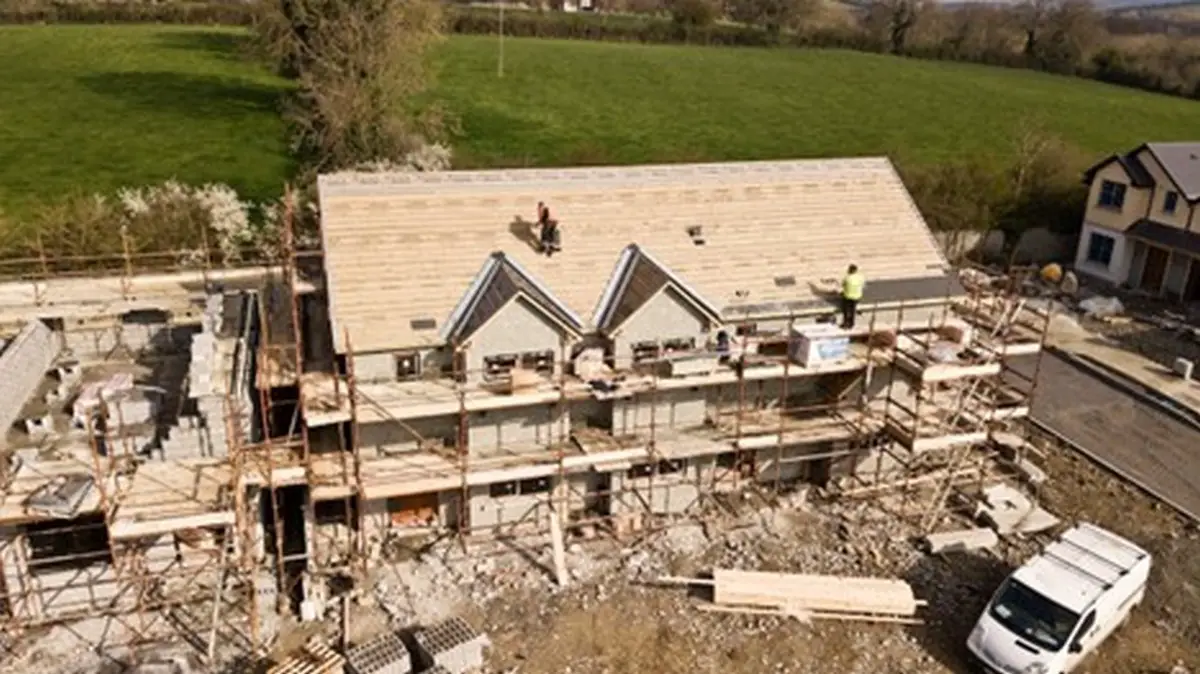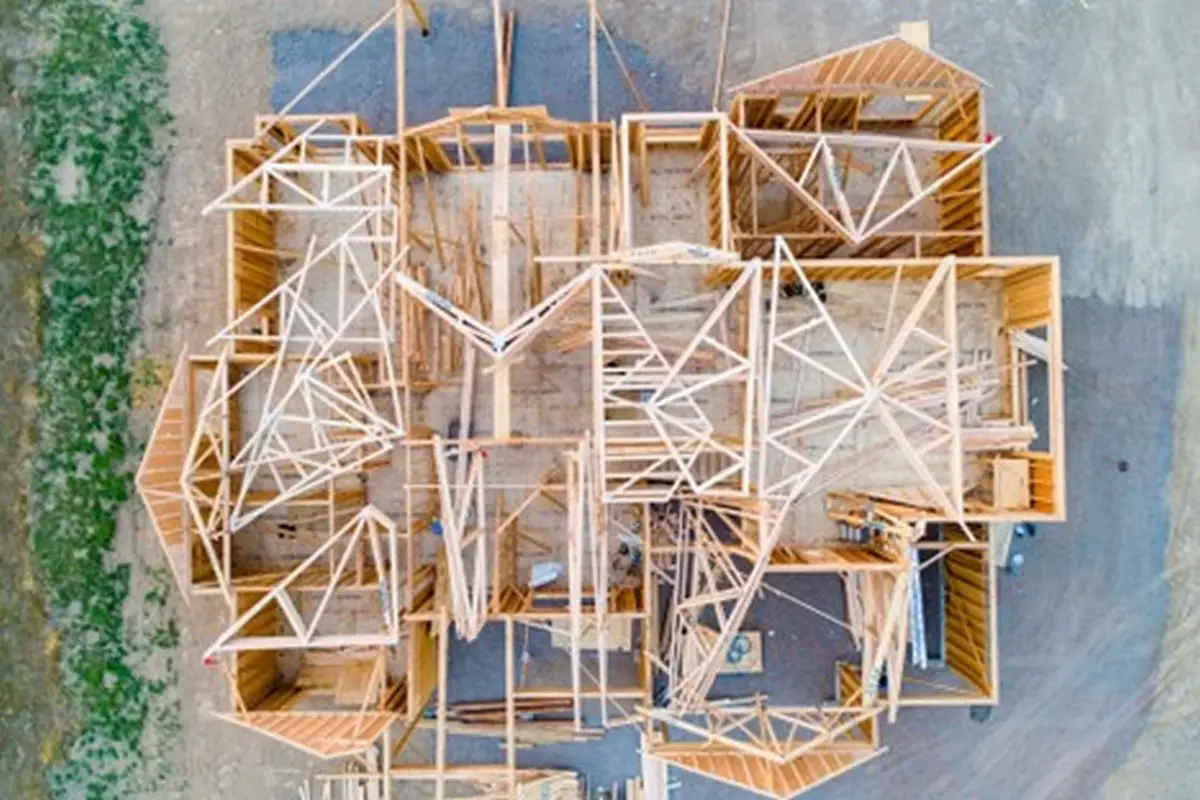Home construction tips and tricks guide, Dayton house pool build, Ohio property concrete calculator advice
6 Home Construction Tips and Tricks
Oct 19, 2023
When constructing a house, everyone looks for ways to ‘nail it.’ However, whether you are building a house from scratch or remodeling an existing one, the process can be tricky. There is no shortage of disaster stories about unfinished houses or contractors leaving the construction mid-way.
In fact, according to research by McKinsey & Company, nearly 98% of construction projects surpass their budget, often by a whopping 80% of the initial estimate. And if that wasn’t enough, a staggering 77% of these projects are delayed by at least 40%, with an average setback of 20 months.
So, you cannot start the construction of your home mindlessly. Without the right strategy, planning, and a strong resolve to handle unexpected events, you should not undertake this venture.
With that said, below are some tips and tricks for successful home construction.
1. Create a Plan
The success of a construction project significantly depends on your planning. This includes preconstruction, construction phase, and execution planning.
Benefits of Having a Plan Before Initiating House Construction
A well-thought-out plan helps you:
- Stay on track.
- Procure the materials timely, preventing delays in construction.
- Stick to your schedule by anticipating potential challenges and having strategies in place.
- Apply for required permits on time, saving you time and hassle.
2. Procure Material for Your Project
Selecting and procuring materials, such as cement, sand, bricks, and other items, is crucial for the successful completion of your project. Acquiring an ample supply of materials a couple of weeks before commencing the project enables you to maintain progress and avoid delays caused by material shortages.
When purchasing materials, it’s essential to determine the exact quantity required. You can use reliable online tools like a concrete calculator for this purpose. Utilizing a calculator to assess the necessary materials for your specific structure ensures that you won’t order insufficient quantities or have to pause your project while awaiting additional materials.
3. Use Building Information Modeling
Building information modeling (BIM) is a process frequently used in the construction industry. It is a digital representation of the physical and functional characteristics of a building, providing a collaborative platform for various stakeholders to work together efficiently.
This technology helps streamline the entire construction process, from initial design to facility management, by enabling the creation of detailed 3D models and facilitating data-driven decision-making.
According to an in-depth survey on BIM usage and implementation conducted by Becerik-Gerber and Rice, 41% of respondents experienced a boost in project profitability, whereas 55% reported that BIM contributed to reduced project expenses.
Benefits of Building Information Modeling for Home Construction
- Assists in understanding the complicated structural and design-related elements of a house.
- Allows you to visualize how various design elements will look together after the completion of the construction process.
- Helps builders manage various construction projects simultaneously.
- Allows homeowners to see three-dimensional models of their future house and choose a suitable layout.
- Ensures efficient communication between the architect, engineers, contractors, and homeowners and prevents mistakes due to miscommunication.
- Provides accurate cost estimates about the material required for the project, helping make a realistic budget.
- Helps identify errors and conflicts among various design elements during the early planning phase of your home construction project.
- Ensures your chosen design and construction adhere to the rules and regulations of your area.
4. Choose Sustainable Building Materials
The World Green Building Council estimates that the construction industry is responsible for approximately 39% of global carbon emissions. Therefore, considering the sustainability of your chosen material should be a major concern when constructing your house to limit your environmental footprint. Sustainability means that a particular material can be used for an extended amount of time and that its manufacturing and use have the least environmental impact.
Sustainable Materials You Can Consider for Your Home Construction
- Bamboo is an eco-friendly alternative to hardwood; it grows much faster and does not require resources like water and fertilizer in large quantities for its growth. It has double the compressive strength of concrete and nearly matches the tensile strength of steel. Therefore, Bamboo is an excellent choice for flooring, furniture, and even structural elements of your house.
- Retrieving reclaimed wood from old buildings or other sources and repurposing it into paneling, flooring, and furniture is another eco-friendly idea. Reclaimed wood, being decades old and having withstood the test of time, is typically more robust and long-lasting than new wood. It is also more economical than buying new wood, so using it will not only benefit your construction budget but also prevent extensive wood waste.
- Recycled steel is an eco-friendly option. If more people start using recycled steel, new steel demand could decrease significantly. You can utilize recycled steel in the structural framework of the house, including beams, columns, and trusses, and as a roofing material.
- Clay or earthen plaster is a sustainable material; it is non-toxic and natural and can be used for wall finishes. Beyond being eco-friendly, earthen tiles promote breathability, contributing to a healthier indoor environment.
Benefits of Using Moisture Barriers in Your Home Construction
- Moisture barriers prevent water from infiltrating the house through walls and floors, reducing the risk of mold and mildew growth in your house. In return, this prevents your house’s indoor air from turning musty.
- They make your house more energy efficient, maintain a stable indoor temperature, and reduce stress on your house’s heating and cooling system.
- By protecting your home from water damage, moisture barriers make its structure more durable, extending its lifespan while reducing maintenance costs.
- They inhibit heat transfer by acting as thermal barriers.
Moisture barriers are available in various materials, including plastic mesh and paper. Choose the right material that goes perfectly with the concrete you use. Also, consider the weather in your area; areas with heavy rainfall and flooding may require extra caution.
6. Hire a Contractor
A survey by Clovered revealed that accidentally tripping over materials, hitting oneself with a hammer, and cutting the skin with a tool are some of the most common injuries that occur during DIY projects. Moreover, according to the Centers for Disease Control and Prevention, over half a million people are treated for ladder-treated injuries annually.
So, if the DIY approach is too much for you to handle, it’s best to rely on professionals for extensive jobs like home construction. Hiring an experienced contractor to supervise your project can help ensure its timely completion. However, selecting the right contractor is a time-consuming process.
It requires you to look for references, consider multiple options, visit and inspect contractors’ previous projects to gauge their work quality, and so on. So, start finding the contractor during the planning stage of your home construction.
Qualities to Look For In a Contractor
While you might find many options when looking for a contractor for your project, some aspects that can help you make the right decision are mentioned below:
- Experience working in the industry.
- Ability to complete jobs on time.
- Relationship with subcontractors.
- Ability to adhere to the budget.
- Reputation in the market.
- Clear and open communication.
- Quality of work.
6 Home Construction Tips Conclusion
House construction is a huge undertaking and a challenging one too. Therefore, it requires extensive planning and careful implementation. At the same time, you need risk mitigation strategies for emergencies such as delays, structural damage, and unexpected changes in initial planning. These tips ensure that your construction project goes as smoothly as possible.
To understand each aspect better and further enhance your construction knowledge, consider exploring additional resources such as construction forums, online courses, and professional consultations. Staying informed and adapting to challenges throughout your construction journey is key. Now armed with valuable insights, take the next step with confidence, apply these tips, and turn your home construction project into a rewarding reality. Good luck on your construction journey!
Comments on this guide to 6 Home Construction Tips and Tricks article are welcome.
Home Construction Design
Home Construction Articles
Estimate new home construction costs
Reasons To Consider Custom Home Construction
Why Construction Safety Is Important
Property Articles
Residential Architecture
Comments / photos for the 6 Home Construction Tips and Tricks page welcome






